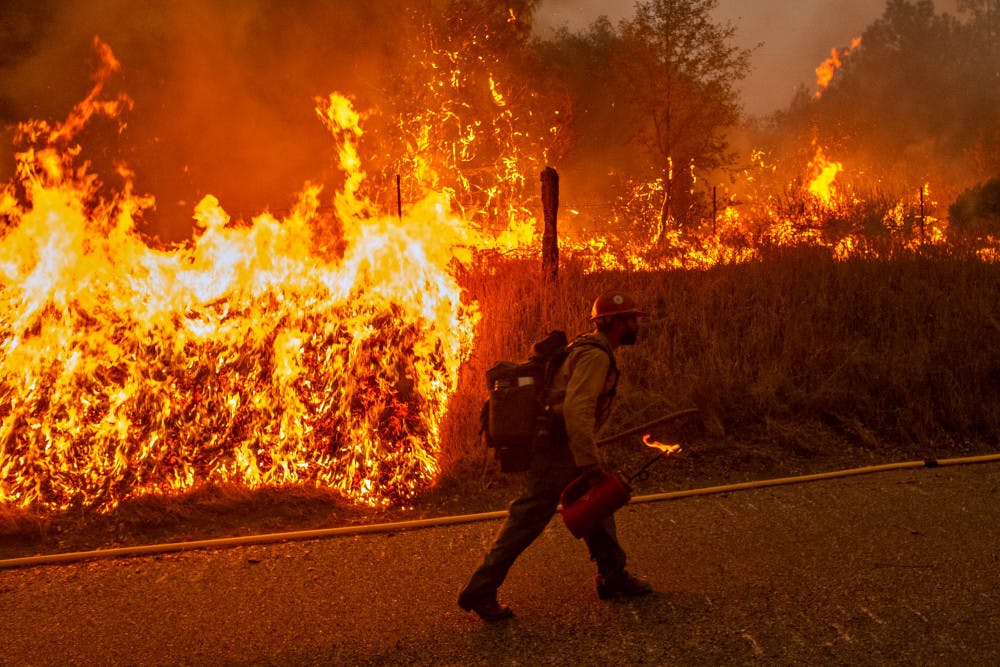Twenty-seven are dead, dozens are missing and evacuations are in place in Idaho, Oregon, Nevada and California as fires caused by thunderstorms and droughts have ravaged the Western United States, with high temperatures and dry winds aiding in spreading the flames across millions of acres.
The flames have resulted in thick smoke across the entire Pacific Coast, which has been documented as having traveled as far as Europe.

But despite the dangerous conditions outside, students still have classes to attend.
Frances Lofranco, a freshman political science and law major, has been taking her classes remotely from Walnut Creek, California, while counties and towns surrounding her home have evacuated. According to Lofranco, her town has not yet received the order.
“I have asthma, so I can’t go out to run anymore,” Lofranco said. “[The air] is pretty bad, and for a while [the sky] was just orange for a long time, so it was just kind of weird and it made everyone sleepy.”
Walking outside during the wildfires means breathing in the smoke. There is also ash covering the area, especially people’s cars. When it came to the heat, temperatures would rise to around 100 degrees, then suddenly plummet to 80.
“I think this fire is a lot worse than the ones in the beginning,” Lofranco said. “In the [January] fires, we couldn’t go to school for a while. But this fire affected us even more than quarantine.”
Areas in California that are at higher altitudes have yet to face any fires. However, the smoke is still a prominent issue. One of these cities is Oakland, where Laura Staliva, a freshman psychology major, lives.
“We live in the hills, so we have a view,” Staliva said. “It’s just completely covered in smoke, so you can’t see anything.”
Staliva said her family had to evacuate for a day, as dangerous smoke amid a respiratory pandemic could make breathing difficult. Their home remains untouched by the fires.
Julia Nicolls, a junior diplomacy major and president of the Student Government Association, has been attending classes from her home in Portland, Oregon. She said the smoke makes it hard for her to drive anywhere and her place of work has closed.
“I did not have to evacuate, but my close family friends are staying with my family because they had to,” Nicolls said. “Their house didn’t burn, but there was a lot of smoke damage.”
Since the beginning of the year, there have been fires burning up and down the west coast. The smoke has spread to the east coast, resulting in lower temperatures and hazy skies on Seton Hall’s campus this week.
“People should know the severity of it,” Lofranco said. “All over Instagram, it’s a joke, but it’s affecting a lot of people. That’s why, for a while, I thought the fires weren’t bad until I went out.”
Emma Thumann can be reached at emma.thumann@student.shu.edu.





